
The New World leaf-nosed bats (Phyllostomidae) are found from southern North America to South America, specifically from the Southwest United States to northern Argentina. They are ecologically the most varied and diverse family within the order Chiroptera. Most species are insectivorous, but the phyllostomid bats include within their number true predatory species and frugivores. For example, the spectral bat, the largest bat in the Americas, eats vertebrate prey, including small, dove-sized birds. Members of this family have evolved to use food groups such as fruit, nectar, pollen, insects, frogs, other bats, and small vertebrates, and in the case of the vampire bats, even blood.
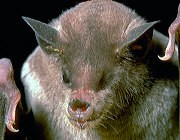
The lesser long-nosed bat is a medium-sized bat found in Central and North America. It is sometimes known as Sanborn's long-nosed bat or the Mexican long-nosed bat, though the latter name is better avoided since it is also used for the entire genus Leptonycteris and for one of the other species in it, the greater long-nosed bat.
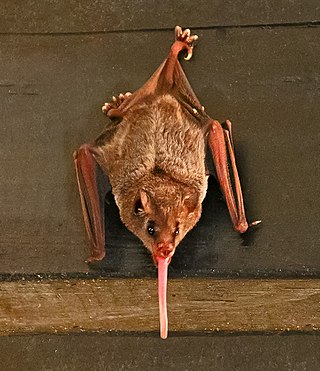
Pallas's long-tongued bat is a South and Central American bat with a fast metabolism that feeds on nectar.

The dark long-tongued bat is a species of bat from South and Central America. It was formerly considered the only species within the genus Lichonycteris, but is now recognized as one of two species in that genus, along with the pale brown long-nosed bat. It is small species of bat, with adults weighing 6–11 g (0.21–0.39 oz) and having a total length of 46–63 mm (1.8–2.5 in).
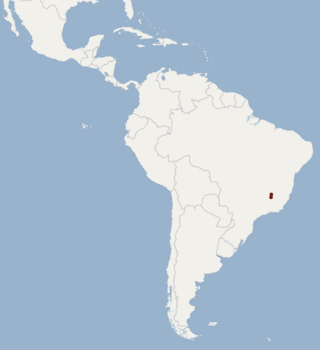
Bokermann's nectar bat is a bat species from South America. It is endemic to Brazil. It feeds on nectar, and is listed as an endangered species.

Thomas's nectar bat is a bat species from South and Central America. Thomas's nectar bat pollinates the vine Marcgravia.

Lonchophylla is a genus of bats in the family Phyllostomidae.

Macroglossus is a genus of megabats found in Indonesia and Southeast Asia. It has two species:

The Mexican long-tongued bat is a species of bat in the family Phyllostomidae. It is the only species within the genus Choeronycteris. The species is found in El Salvador, Guatemala, Honduras, Mexico, and the United States.

Leach's single leaf bat, also known as Greater Antillean long-tongued bat, is a species of bat in the family Phyllostomidae. It is found in the southern Bahamas and in all the Greater Antilles. It forms large colonies, with up to a few hundred thousand individuals, and feeds on a relatively wide variety of food items including pollen, nectar, fruit and insects.

The banana bat is an endangered species of bat in the family Phyllostomidae. It is also commonly known as the trumpet-nosed bat or the Colima long-nosed bat.
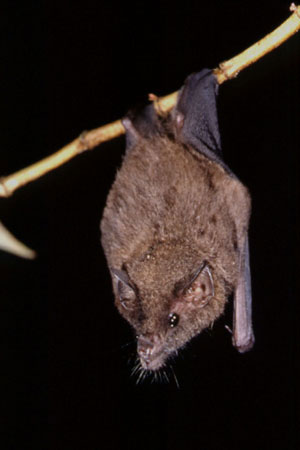
Glossophaginae is a subfamily of leaf-nosed bats.

The megabat tribe Macroglossini is within the subfamily Pteropodinae

Dryadonycteris capixaba is a species of leaf-nosed bat found in South America. It is the only species within the genus Dryadonycteris
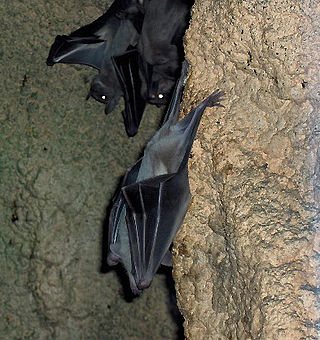
The Rousettinae are a subfamily of megabats. Taxa within this subfamily include:
Cadena's long-tongued bat is a bat species from Colombia and Ecuador. It was originally described in the genus Lonchophylla, but was moved to Hsunycteris when the latter was erected in 2014.
Patton's long-tongued bat is a bat species from Bolivia, Colombia, Ecuador, and Peru. It was originally described in the genus Lonchophylla, but was moved to Hsunycteris when the latter was erected in 2014.
Dashe's nectar bat is a bat species from Bolivia, Colombia, Ecuador, and Peru. It was cited as a member of the genus Hsunycteris before it was formally described.

Lonchophyllinae is a subfamily of leaf-nosed bats.













